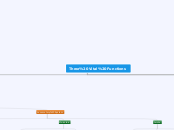Three Vital Functions
Interaction
Central Nervous
System
The Brain
Cerebrum
Processing information,emotions
thinking,learning,behaviour
and voluntary movements.
Cerebellum
Balance,movement
and coordination.
Brain Stem
Involuntary Movements
Spinal Cord
Controls the
reflex actions
Peripheral Nervous
System
Is made up of nerves
and transfer
information
Five Senses
Sight: Eyes
Hearing: Ears
Smell: Nose
Taste: Tongue
Touch: Skin
Locomotory System
The Skeleton
Function
Support our bodies,
give shape to our
bodies and to
protect our internal
organs.
Types of
bones
Short Bones
They provide stability
and support.
Example: Vertebrae
Long Bones
Are used for movement.
Example: Femur
Flat Bones
They protect our
internal organs.
Example: Ribs
Muscles
Are controled by the
Nervous system,
they contract and
relax and give our
body shape.
Types of
muscles
Skeletol Muscles
They work in pairs.
Example: Triceps and Biceps
Smooth Muscles
Involuntary Muscles.
Example: Intestines
Cardiac Muscles
Involuntary Muscles
Example: The Heart
Joints
Fixed Joints
They don't move
Example: Cranium
Semiflexible Joints
They allow some
movement
Example: Vertebrae
Flexible Joints
They allow a lot of
movement
Example: Shoulders
Nutrition
Circulatory System
Organs
Heart,Veins and Arteries
Function
Transport Oxigen and Nutrients
around the body.
Digestive System
Organs
Mouth,Oesophagus,Stomatch,
Small Intestine,Large Intestine,
Pancreas,Liver,Anus and Rectum.
Function
Extract Nutrients from
food and expel waste.
Respiratory System
Organs
Nose,Lungs,Mouth,
Diaphragm,Pharynx,
Trachea,Bronchi.
Function
Help us breathe,
extract Oxygen and
expel carbon dioxide.
Excretory System
Organs
Kidneys,Ureters,
Bladder,Urethra,
Renal Arteries and
Sweat Glands.
Function
Expel waste from our
body.
Reproduction
Male Reproductive System
Female Reproductive System
